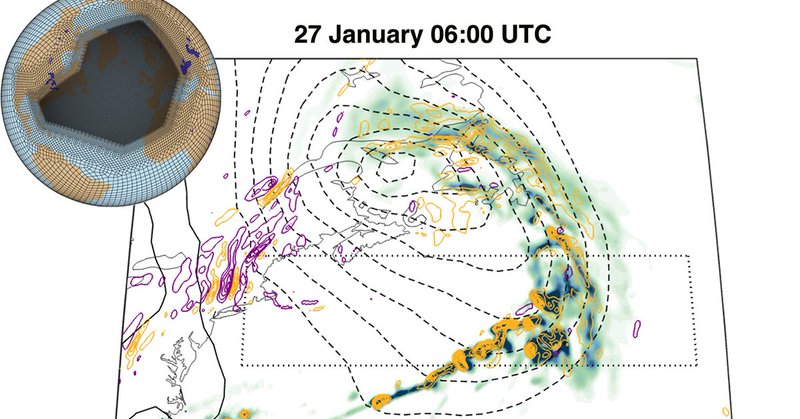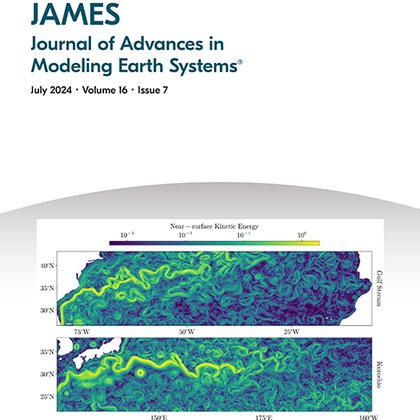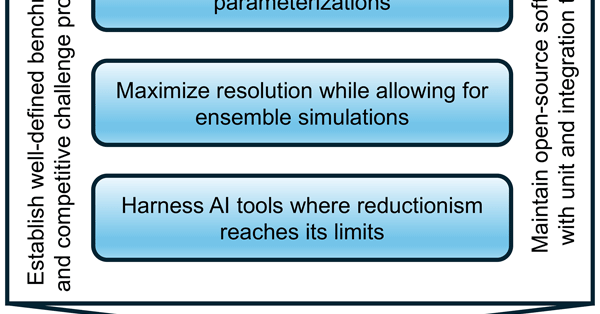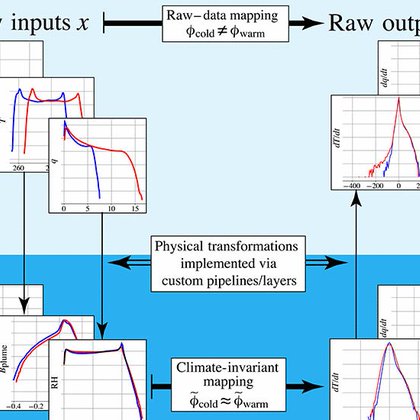
Robert Jnglin Wills
@ClimateAnomaly
Followers
2K
Following
1K
Media
28
Statuses
461
Assistant Professor of Climate Dynamics @ETH_en interested in atmosphere-ocean dynamics of climate variability & change. Posting elsewhere
Zürich, Switzerland
Joined May 2016
These simulations were only possible by a university researcher like me with a lot of technical help (and computer time) from @NCAR_Science , especially from co-authors Adam Herrington & Isla Simpson. This project has been a slow cooker we've been working on since late 2020 (6/6)
0
0
9
Our paper and its implications for ongoing high-resolution modeling efforts is nicely summarized in an Editor's Highlight by Hannah Chistensen. (5/6) https://t.co/f0kcie4Yz1
eos.org
State-of-the-art high-resolution models are needed to reveal the ocean’s role in driving extra-tropical weather systems.
1
0
5
The ability to run atmospheric models for multiple decades at such high resolution (here 14 km via regional refinement) is quite new, and we will be learning a lot more in the next few years as other climate simulations are run at this resolution. (4/6)
1
0
2
The implication is that the decadal variability and predictability of weather systems over Europe could be much higher (and better represent reality) in models with increased resolution, potentially also helping to resolve the so-called "signal-to-noise paradox". (3/6)
1
0
2
The larger atmospheric response results from stronger updrafts within weather fronts, in particular cold fronts, which provide a conduit for surface anomalies to be communicated aloft and affect the upper atmosphere and large-scale circulation. (2/6)
1
0
4
Promoting papers feels a bit strange this week considering everything going on, but I am excited about our new paper showing a larger influence of Gulf Stream anomalies on the atmospheric circulation over Europe in models that resolve weather fronts (1/6) https://t.co/5tVgIBGuJr
agupubs.onlinelibrary.wiley.com
There is a large circulation response to idealized Gulf Stream sea-surface temperature (SST) anomalies in an atmospheric model with 14-km regional grid refinement This response is weaker or absen...
1
9
33
Using AI to understand the Earth System response: The Forced Component Estimation Statistical Method Intercomparison Project (ForceSMIP) uses statistical and machine learning methods to try to figure out the true forced response, as reflected in the evolving pattern of surface
1
1
3
(3) discussion of the tradeoffs of high resolution and the lack of a specific scale where all of the relevant processes are resolved, (4) discussion of new ML approaches to optimize parameters directly, and (5) discussion of a balanced approach to bring this all together. (3/3)
0
0
0
Included is (1) an evaluation of how climate skill has improved over the last 20 years and is continuing to (mostly) improve with efforts to increase resolution, (2) considerations for successful process-informed parameterizations, ... (2/3)
1
0
3
To optimize climate models, how do we prioritize between resolution & ensemble size, between physical param. development & incorporating AI? In a perspective paper out this week, Tapio Schneider, Ruby Leung, and myself argue we need a balanced approach:
acp.copernicus.org
Abstract. Accelerated progress in climate modeling is urgently needed for proactive and effective climate change adaptation. The central challenge lies in accurately representing processes that are...
1
1
18
Is the La-Niña-like warming pattern over the past 40+ years forced or unforced? In this seminar, I argue it is forced & show statistical + hi-res model forced response estimates. Peter Huybers discusses obs. uncertainty & evidence models have too little low-freq. variability
Recording and chat transcript of April's ECS-Cloud Feedback symposium are now available: https://t.co/ahqRHpiwue Really fun "debate" between Peter Huybers and @ClimateAnomaly on "Can we rule out internal variability as the main driver of recent tropical SST trends?"
2
3
25
"#Climate models have done well, but they also show some biases. It is essential to improve them in order to understand the impact of #GlobalChange on regional weather", explains @ClimateAnomaly (@usys_ethzh). Statistical and machine learning methods offer one solution 🌎 #SGCD24
0
3
12
Join us next month for a panel discussion on "Can we rule out internal variability as the main driver of recent tropical SST trends?" w/Peter Huybers & @ClimateAnomaly
Recording and chat transcript of March's ECS-Cloud Feedback symposium are now available: https://t.co/D6IwtEVfeh After last month's clear-sky session, this month featured great talks by Catherine Stauffer and Brett McKim on cloud feedbacks
0
2
8
New paper in @PNASNews led with @cristiproist shows that a weird spatial pattern of temperature change has slowed global-mean warming since 1980. Because the pattern could evolve in the future, observed warming doesn’t help us constrain long-term warming. https://t.co/Mnrs7V8RzK
6
43
138
Meet our Speaker Robert Jnglin Wills @ClimateAnomaly @usys_ethzh at the #SGCD24 and discuss what leads some climate change impacts to be robust and others uncertain. ➡️Register now: https://t.co/UfUlsNAjhp
1
3
6
Really excited to share our new paper on climate-invariant machine learning https://t.co/t2yg4pxeV3 to solve extrapolation issues under climate change, led by the great Tom Beucler
science.org
Physically informed transformations aid the machine learning of Earth system model processes that generalize across climates.
2
26
137
Less than a week to submit an abstract for #EGU24. If you work on understanding the contributions of internal variability and forced responses to historical or future climate change and climate impacts (e.g., using large ensembles), then please consider submitting to our session!
Join us at #EGU24 for a session on “Disentangling internal variability and forced response: Changes, Methods, Mechanisms and Impacts” with Andrew Schurer (U. Edinburgh) as an invited speaker! Abstract Deadline January 10th. Submit here: https://t.co/B13xQ7kXPv
0
0
4
Observations from 1980–2020 of near-surface atmospheric water vapor in arid and semi-arid regions don’t match climate models. This gap between expectations and data has major implications for hydroclimate projections, including fire hazards. In PNAS: https://t.co/hM2P67YQqY
1
10
37
0
0
2
Join us at #EGU24 for a session on “Disentangling internal variability and forced response: Changes, Methods, Mechanisms and Impacts” with Andrew Schurer (U. Edinburgh) as an invited speaker! Abstract Deadline January 10th. Submit here: https://t.co/B13xQ7kXPv
1
6
21










